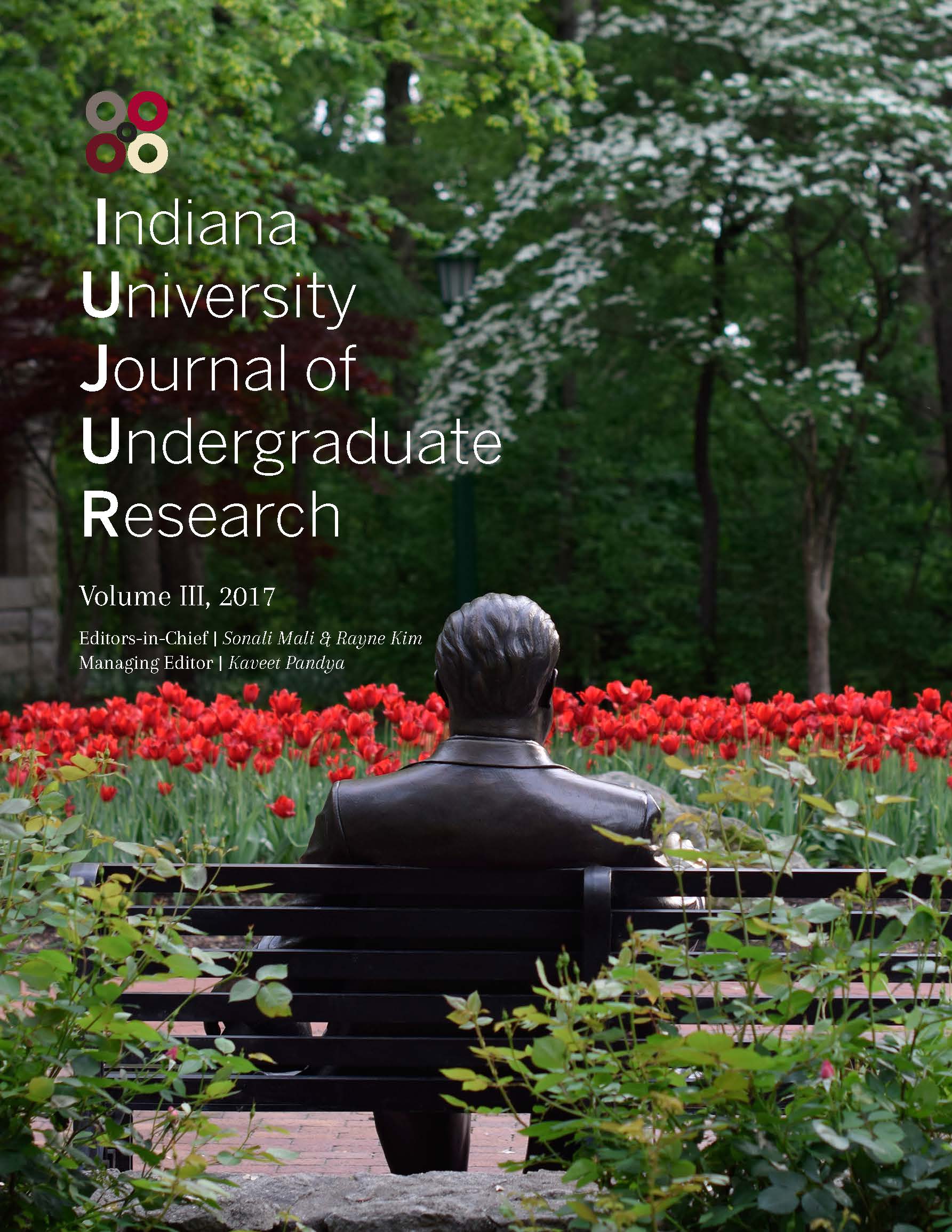A proposed EEG study: the role of object affordance during action observation
Main Article Content
Abstract
Over the past two decades, research on the human mirror neuron system (MNS) has flourished. According to this model, there is substantial evidence that both action execution and action observation activate the motor system. However, to date, few studies have attempted to examine the role that object affordance may have during action observation. The proposed study attempts to assess this and other issues by having participants watch videos of an actor making goal-directed reaches to a common household object. In the congruent condition, the actor makes a reach and grasps the handle of a mug. In the affordance incongruent condition, the actor makes a reach but grasps the side of the mug opposite from the handle. Electroencephalogram (EEG) will be recorded throughout participant viewing and the EEG data will be decomposed into frequency bands using a Morlet wavelet analysis. The mu rhythm (8-13 Hz) will be of particular interest. Electrode sites of interest include sites over the central parietal areas as well as frontal sites. It is hoped that the proposed study will provide insight into the role of object affordance during action observation.
Downloads
Article Details
Authors who publish with this journal agree to the following terms:
- Ownership of the copyright shall remain with the Author, subject to IUJUR’s use and the rights granted by the Creative Commons license assigned by the Author. A Creative Commons Attribution-NonCommercial 4.0 International (CC BY-NC 4.0) license will be applied to the published work unless otherwise indicated in the Student Author Contract. The CC BY-NC 4.0 license (https://creativecommons.org/licenses/by-nc/4.0/) lets others remix, tweak, and build upon the published Work non-commercially, and although the new works must also acknowledge the original IUJUR publication and be noncommercial, they don’t have to license their derivative works on the same terms.Authors are able to enter into separate, additional contractual arrangements for the non-exclusive distribution of the journal's published version of the work (e.g., post it to an institutional repository or publish it in a book), with an acknowledgement of its initial publication in this journal.
- Authors are permitted and encouraged to post their work online (e.g., in institutional repositories or on their website) prior to and during the submission process, as it can lead to productive exchanges, as well as earlier and greater citation of published work (See The Effect of Open Access).
References
Bach, P., Bayliss, A. P., & Tipper, S. P. (2010). The predictive mirror: interactions of mirror and affordance processes during action observation. Psychonomic bulletin & review, 18(1), 171-176.
Bach, P., Nicholson, T., & Hudson, M. (2014). The affordance-matching hypothesis: how objects guide action understanding and prediction. What can we make of theories of embodiment and the role of the human mirror neuron system?, 99.
Bertenthal, B.I., Longo, M. R., & Kosobud, A. (2006). Imitative response tendencies following observation of meaningless actions. Journal of Experimental Psychology: Human Perception & Performance, 32, 210-225.
Boyer, T. W., & Bertenthal, B. I. (2013). Covert and overt social attention: Pointing automatically orients direction of attention, Journal of Vision, 13(9), 1128; doi: 10.1167/13.9.1128.
Brass, M., Bekkering, H., Wohlschläger, A., & Prinz, W. (2000). Compatibility between observed and executed finger movements: comparing symbolic, spatial, and imitative cues. Brain and cognition, 44(2), 124-143.
Buccino, G., Binkofski, F., Fink, G. R., Fadiga, L., Fogassi, L., Gallese, V., ... & Freund, H. J. (2001). Action observation activates premotor and parietal areas in a somatotopic manner: an fMRI study. European journal of neuroscience, 13(2), 400-404.
Di Pellegrino, G., Fadiga, L., Fogassi, L., Gallese, V., & Rizzolatti, G. (1992). Understanding motor events: a neurophysiological study. Experimental brain research, 91(1), 176-180.
Gibson, J. J. (1979). The ecological approach to visual perception. Boston: Houghton Mifflin.
Gillmeister, H., Catmur, C., Liepelt, R., Brass, M., & Heyes, C. (2008). Experience-based priming of body parts: a study of action imitation. Brain research, 1217, 157-170.
Grèzes, J., Armony, J. L., Rowe, J., & Passingham, R. E. (2003). Activations related to “mirror” and “canonical” neurones in the human brain: an fMRI study. Neuroimage, 18(4), 928-937.
Iacoboni, M. (2009). Imitation, empathy, and mirror neurons. Annual review of psychology, 60, 653-670.
Iacoboni, M., Molnar-Szakacs, I., Gallese, V., Buccino, G., Mazziotta, J. C., & Rizzolatti, G. (2005). Grasping the intentions of others with one’s own mirror neuron system. PLoS Biol, 3(3), e79.
Longo, M. R., Kosobud, A., & Bertenthal, B. I. (2008). Automatic imitation of biomechanically impossible actions: Effects of priming movements vs. goals. Journal of Psychology: Human Perception and Performance, 34, 489-501.
Muthukumaraswamy, S. D., Johnson, B. W., & McNair, N. A. (2004). Mu rhythm modulation during observation of an object-directed grasp. Cognitive Brain Research, 19(2), 195-201.
Perry, A., & Bentin, S. (2009). Mirror activity in the human brain while observing hand movements: A comparison between EEG desynchronization in the μ-range and previous fMRI results. Brain research, 1282, 126-132.
Proverbio, A. M. (2012). Tool perception suppresses 10–12Hz μ rhythm of EEG over the somatosensory area. Biological psychology, 91(1), 1-7.
Rizzolatti, G., Fogassi, L., & Gallese, V. (2001). Neurophysiological mechanisms underlying the understanding and imitation of action. Nature Reviews Neuroscience, 2(9), 661-670.
Rizzolatti, G., Fadiga, L., Gallese, V., & Fogassi, L. (1996). Premotor cortex and the recognition of motor actions. Cognitive brain research, 3(2), 131-141.46

